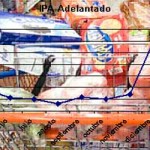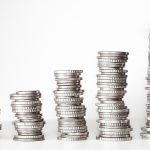¿Qué podemos esperar del mercado esta semana? 140 para tratar las cuatro áreas clave para tus finanzas y la economía global más un «Y si…»
Macro
QE and growth – The 95 per cent correlation between annual mozzarella consumption and civil engineering doctorates awarded in America is not causal. Likewise the fact that over the last five years US output growth averaged 2.3 per cent in quarters when there was QE as well as in quarters when there was none, does not prove the policy ineffective. Counterfactuals and multiple transmission channels complicate any evaluation. But what of fiscal policy? After dragging growth lower for much of the last five years, government spending accounted for a quarter of the 3.5 per cent expansion in US output over the past three months. Indeed, fiscal policy becoming a tailwind helped push cumulative output growth over the second and third quarters to a decade high despite the halving of Fed asset purchases. Food for thought as Japan expands QE while tightening government finances.
Strategy
Brazil election – Who yearns more for better results over Dilma Rousseff’s next four years in office: Brazil’s football fans or equity investors? The former suffered a seven-one humiliation versus Germany in the World Cup while the latter watched $340bn of market capitalisation disappear from the Bovespa in the president’s first term. The whole index was barely worth more than that at the end of 2009 and the decline erases half of the market wealth created during President Lula’s final four years. To be fair 90 per cent of the value destruction is due to Vale and Petrobras alone. There is nothing anyone can do about commodity prices. But that will not make investors feel better given that the $125bn fall in Vale’s market cap is almost equivalent to one BHP Billiton, while Petrobras’s 70 per cent collapse could buy them BP today.
Stocks
Facebook – Leave aside Mark Zuckerberg’s dystopian goal of «connecting the whole world». Before then investors must think about the eight per cent drop in Facebook’s share price since Wednesday. To understand why jitters surround a company that is growing sales and earnings 60 and 90 per cent respectively, look through a DuPont analysis lens. Multiply the current ebit margin of about 40 per cent by an asset-turn of 0.6 times and a leverage ratio of 1.2. That spits out a return on equity of 17 per cent, adjusted for tax. Given that asset-turn and leverage are unlikely to change much, shareholder returns become a margin game. Hence the reaction when Facebook said spending would increase 50 to 70 per cent in 2015. The rise equates to almost half of current ebit or the entire projected increase in gross profits next year.
Finance
Comprehensive assessment – If nothing else the Asset Quality Review reminds us how subjective even the numbery world of finance remains. Just the AQR’s more standardised definition of non-performing loans across European banks, for example, increased these exposures by some €55bn. And it turns out that definitions you would imagine are impossible to fudge still result in considerable variation. How come almost 30 per cent of banks that participated in the review have a different take to the European Banking Authority on what «90 days past due» means? The answer here is that defaults also have to be material, and Article 178 of the new capital requirements regulation says materiality shall reflect levels of risk a member state «considers to be reasonable». Sure, risks rarely conform. But with wriggle room even on seemingly basic standards what hope of harmonising an entire banking system?
Digestif
Five year-five year – Most people do not know what they want for lunch tomorrow. So why care about their long-term inflation view? The five-year forward breakeven rate is a measure of inflation expectations in five years time, for the next five years. Derived from the TIPS and nominal Treasury markets, it has been declining in America since last year. Hence the worry that loose policy is ineffective. But surely watching markets gaze a decade hence is ridiculous. Indeed we know it is because past crystalballing can be tested. For example in early 1999 the five year-five year rate suggested inflation would average 2 per cent from 2004 to 2009. It was 3 per cent in the end. Conversely at the start of 2004 the measure pointed to 3 per cent-plus inflation for five years from 2009. Oops again – it was 1.5 per cent!





